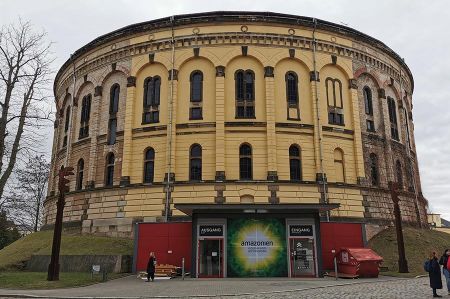Amazonia in the Panometer of Dresden – Yadegar Asisi
- Written by Portal Editor
The Panometer of Dresden, where the panoramic picture “Amazon” by Yadegar Asisi will be shown from January 27, 2024, is a former gas container or gas tank that was once used to store all kinds of gases and in particular to store fuel gases such as town gas and natural gas.
Built as a former DREWAG gas storage facility in 1880, the sandstone building with its eave’s height of 24 meters, a diameter of over 60 meters and a height of 39 meters up to the dome is worth the visit alone. The first gas containers in Germany were built in 1841 by the coppersmith Friedrich August Neuman in Cologne for the British “Imperial Continental Gas Association”. His company became a leader in gas boiler construction and assembled 78 gas boilers at various locations in Europe by 1863. These were designed as bell gas containers without additional telescopes.
Incorporate gasometers into cultural projects
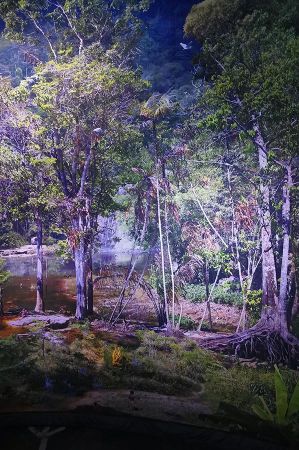 After the demise of the Western European mining industry and as a result of the increased use of natural gas since the 1950s, many of the now useless gasometers were demolished. It was only towards the end of the 20th century that it was recognized that the gasometers had great cultural value as architectural witnesses to a vanished industrial era. At various locations, attempts have therefore been made to include gasometers in cultural projects, for example through exhibitions or sound and light installations. In the Duisburg-Nord Landscape Park, a diving club has installed a complete underwater world including a shipwreck in the Gasometer.
After the demise of the Western European mining industry and as a result of the increased use of natural gas since the 1950s, many of the now useless gasometers were demolished. It was only towards the end of the 20th century that it was recognized that the gasometers had great cultural value as architectural witnesses to a vanished industrial era. At various locations, attempts have therefore been made to include gasometers in cultural projects, for example through exhibitions or sound and light installations. In the Duisburg-Nord Landscape Park, a diving club has installed a complete underwater world including a shipwreck in the Gasometer.
The redesign of the four Viennese gasometers in Vienna-Simmering by the star architects Jean Nouvel, Coop Himmelblau, Manfred Wehdorn and Wilhelm Holzbauer achieved international fame. The oldest and only surviving walled bell gas container in Berlin, the Gasometer Fichestrasse, served as an air raid shelter during the Second World War.
Artist Yadegar Asisi and the so-called “Panometers”
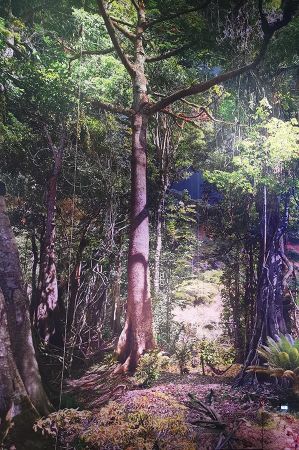 Some gasometers are now also used as exhibition spaces, for example the Gasometer Oberhausen, an anchor point of the European Route of Industrial Culture (ERIH).
Some gasometers are now also used as exhibition spaces, for example the Gasometer Oberhausen, an anchor point of the European Route of Industrial Culture (ERIH).
Or the gasometers in Leipzig, Pforzheim and Dresden-Reick, in which the artist Yadegar Asisi so-called “Panometers” (a A portmanteau of panorama and gasometer), in which large-format panoramas are shown.
Panoramas are the perspective representation of landscapes or events that can be viewed from a fixed point by several people at the same time.
If the images are stationary, the cylindrical surfaces are called circular images or circular paintings, which the viewer is in the middle to view.
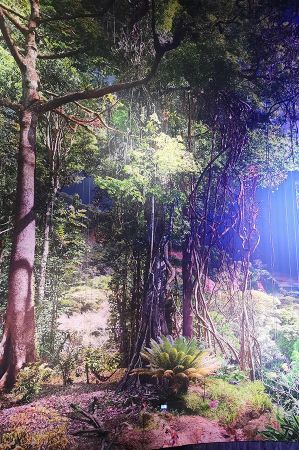 Around 30 panoramas from the 19th and early 20th centuries still exist worldwide today.
Around 30 panoramas from the 19th and early 20th centuries still exist worldwide today.
Since the 1970s, an increasing number of new interpretations of this art and media form have emerged every year.
This Yadegar Asisi creates the world's greatest works. His 360° panoramas on a scale of 1:1 have an image area of up to 3,500 m² (110 m × 32 m) and are currently being shown in the Panometer Leipzig, the Panometer Dresden, the Panorama XXL in Rouen, in the Gasometer Pforzheim, in the Wittenberg360 in Lutherstadt Wittenberg and shown in the Asisi Panorama Berlin.
Work with previously unknown brilliance and optical quality
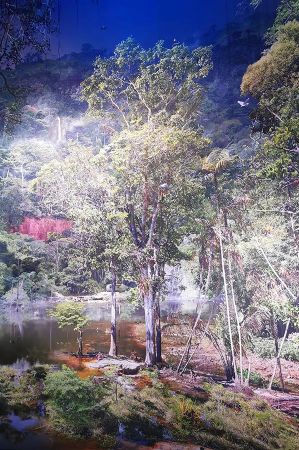 Amazonia was already shown in Leipzig in 2009, where we were lucky enough to meet Yadegar Asisi for the first time.
Amazonia was already shown in Leipzig in 2009, where we were lucky enough to meet Yadegar Asisi for the first time.
The Amazonia work has now been revised especially for the Panometer Dresden using the latest image processing technology and expanded to include numerous details, both visually and in terms of content.
The latest scientific findings about the pre-Columbian settlement of the region were integrated into the panorama in the form of archaeological artifacts as a reminiscence of this time.
The now high-resolution print shows the work in previously unknown brilliance and optical quality.
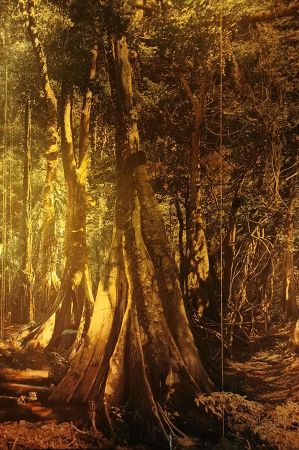 On an image area of around 3,000 m2 and a height of around 27 meters, the cylindrical circular painting shows a hyper-realistic, life-sized condensed scene from the Brazilian jungle on a scale of 1:1.
On an image area of around 3,000 m2 and a height of around 27 meters, the cylindrical circular painting shows a hyper-realistic, life-sized condensed scene from the Brazilian jungle on a scale of 1:1.
The panoramic work of art allows visitors to fully immerse themselves in the flora and fauna of the Amazon basin with its complex peculiarities in its photorealistic scenery.
What is unique about the approach to the image composition is the creation of a place that appears completely natural and realistic, but, like all other panoramas, was created by the artist, an idealized space that could not be experienced in nature in its entirety and at the same time.
Extremely high level of details
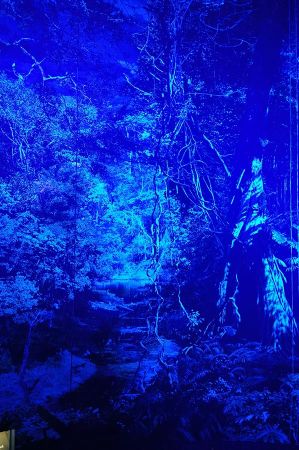 As if in a clearing, the view from the visitor platform in Amazonia opens up far into the Amazon landscape: on the crowns of gigantic jungle trees, on fascinating plants in shades of green and numerous animals from the region.
As if in a clearing, the view from the visitor platform in Amazonia opens up far into the Amazon landscape: on the crowns of gigantic jungle trees, on fascinating plants in shades of green and numerous animals from the region.
Thanks to the extremely high level of detail, it is possible to discover the caterpillars on the leaves, sloths in the trees or parrots in the treetops.
Anyone who enjoys the fascination for nature and the complexity of the natural environment of the tropical rainforest should definitely plan a visit to the Panometer Dresden, especially since the 15-meter-high visitor platform with its three levels in the middle of the Panometer allows different perspectives of the panorama.
 The light production with day and night sequences and accompanying background noise is fantastically coordinated and makes the visit an experience.
The light production with day and night sequences and accompanying background noise is fantastically coordinated and makes the visit an experience.
Yadegar Asisi travelled to the Amazon region four times to develop a feeling for the rainforest and create his spatial design. He took tens of thousands of photographs and countless sketches, watercolours and drawings, which he used for the 360° panorama.
A fascinating panorama that is worth every trip to visit.
Please read as well:
